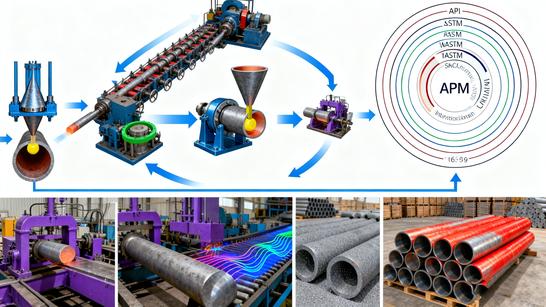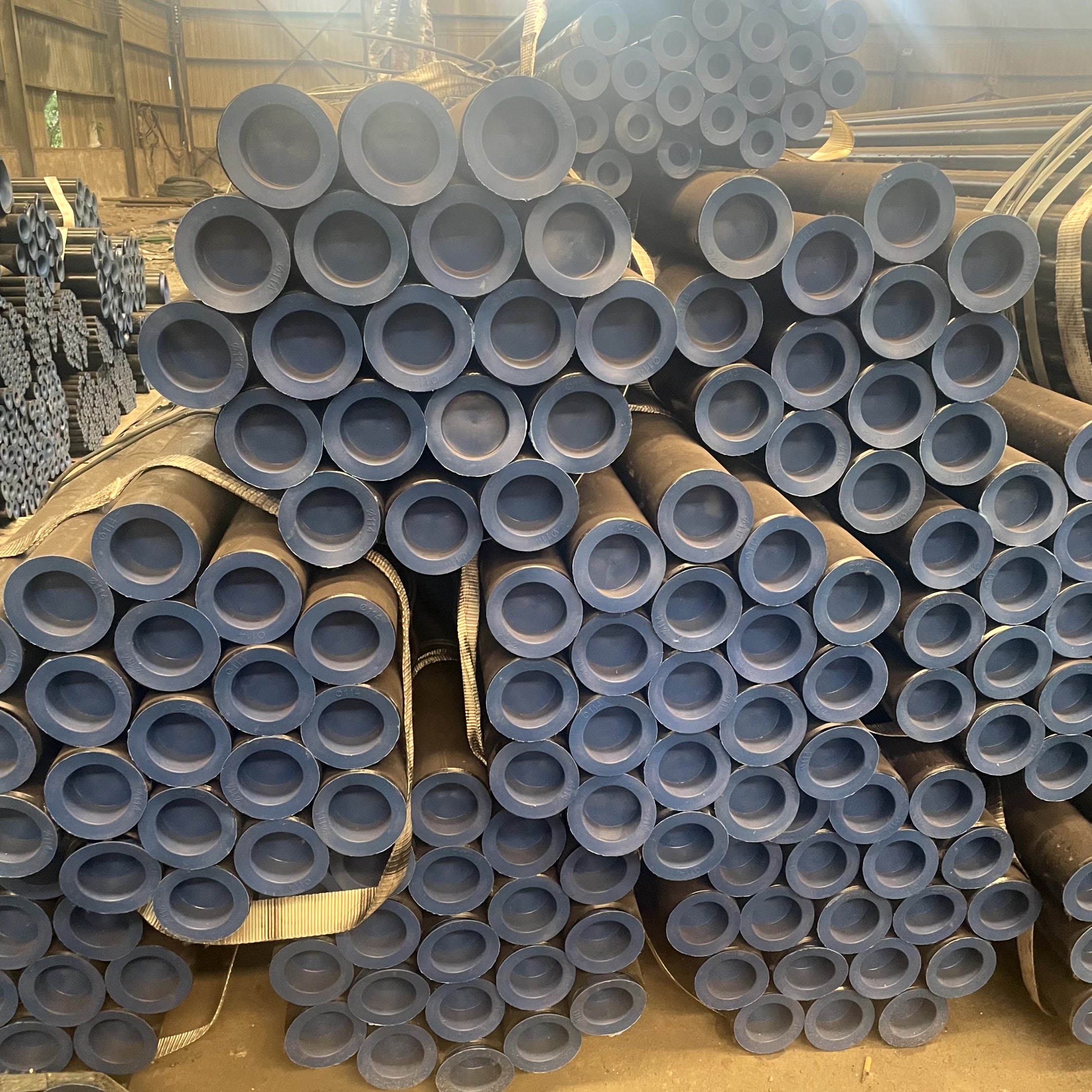In North American and global oil, gas, power generation, and construction projects, ASTM A106 seamless pipe and ASTM A53 are the two most frequently referenced standards. Both fall under the category of carbon steel seamless pipe used for conveying high-temperature, high-pressure fluids or for general pressure systems.
However, despite their similar appearance, they have critical differences in design intent, technical requirements, and performance grades. For procurement managers and engineers, accurately distinguishing between A106 and A53, and understanding what their respective grades (Grade A, B, C) represent, is the first step toward ensuring project compliance and safety.
This article provides a clear, tabular guide, offering an in-depth analysis of the key requirements of the ASTM A106 and A53 standards.
1. Comparison of Standard Scope and Application
Both ASTM A53 and A106 are standards established by the American Society for Testing and Materials (ASTM), but they focus on different requirements.
| Standard | Full Name | Primary Application | Key Characteristics |
| ASTM A53 | Standard Specification for Pipe, Steel, Black and Hot-Dipped, Zinc-Coated, Welded and Seamless | General purpose fluid conveyance (water, gas, steam, air); includes both seamless and welded options. | Broader scope, covering seamless, welded, and galvanized pipe. |
| ASTM A106 | Standard Specification for Seamless Carbon Steel Pipe for High-Temperature Service | Used for high-temperature, high-pressure service (e.g., power plants, boilers, refineries); Seamless pipe only. | More stringent, focused on high-temp/high-pressure applications; typically the preferred choice. |
Summary:
-
If the project involves high temperatures or strict pressure requirements, ASTM A106 seamless pipe is usually mandatory in the specification.
-
If the project is for general, lower-pressure fluid conveyance and has requirements for welded or galvanized pipe, ASTM A53 may be used.
2. Detailed Explanation of A106/A53 Grades (A, B, C)
Both standards define different steel grades (A, B, C), primarily differentiated by carbon content and mechanical properties. Grade C possesses the highest strength.
| Grade | Carbon (C) Content Implication | Strength Level | Most Common Standards |
| Grade A | Lowest Carbon Content | Lowest Strength | ASTM A53 |
| Grade B | Medium Carbon Content (Most Common) | Medium Strength | ASTM A106 and ASTM A53 |
| Grade C | Highest Carbon Content | Highest Strength | ASTM A106 |
3. Chemical Composition Comparison
Chemical composition is the foundation of pipe performance, particularly the content of Carbon (C) and Manganese (Mn). Below is a comparison of the most commonly used Grade B from both standards (data is maximum allowable value unless otherwise stated):
| Element | ASTM A53 Grade B (Seamless) | ASTM A106 Grade B (Seamless) |
| Carbon (C) Max | $0.30\%$ | $0.30\%$ |
| Manganese (Mn) | $1.20\%$ Max | $0.29\% - 1.06\%$ |
| Phosphorus (P) Max | $0.050\%$ | $0.035\%$ |
| Sulfur (S) Max | $0.045\%$ | $0.035\%$ |
| Silicon (Si) | Not Specified | $0.10\%$ Min (Ensuring adequate deoxidation) |
Key Differentiation:
-
A106 (P/S/Si) is Stricter: ASTM A106 seamless pipe has lower limits for Phosphorus (P) and Sulfur (S) (purer steel) and mandates a minimum Silicon (Si) content. This reflects the higher demands of A106 on material quality and weldability.
4. Mechanical Properties Comparison
Mechanical properties directly determine the pipe's pressure-bearing capacity. Below are the minimum requirements for Grades B and C:
| Grade | Tensile Strength (Min) | Yield Strength (Min) |
| A53 Grade A | $330 \text{ MPa}$ ($48 \text{ ksi}$) | $205 \text{ MPa}$ ($30 \text{ ksi}$) |
| A53/A106 Grade B | $415 \text{ MPa}$ ($60 \text{ ksi}$) | $240 \text{ MPa}$ ($35 \text{ ksi}$) |
| A106 Grade C | $485 \text{ MPa}$ ($70 \text{ ksi}$) | $275 \text{ MPa}$ ($40 \text{ ksi}$) |
Summary:
-
Grade C offers the highest strength and load capacity, making it the preferred choice for applications involving the highest pressure and temperature.
-
Grade B is the most common general-purpose carbon steel seamless pipe, balancing cost and performance.
5. Application Quick Reference
| Standard/Grade | Typical Application Scenarios |
| ASTM A53 Gr. B (Seamless) | Structural applications, low-pressure steam lines, fire protection systems, general industrial water conveyance. |
| ASTM A106 Gr. B/C | Oil and gas refining, power station boiler systems, high-temperature/high-pressure process piping, compressor stations. |
Professional Service from Hebei Cangtie
As a professional carbon steel seamless pipe manufacturer, Hebei Cangtie strictly adheres to ASTM A106 and A53 standards in our production and quality inspection processes. We understand the importance of chemical composition and heat treatment on the pipe’s pressure resistance, and we offer a full range of ASTM A106 seamless pipe products from Grade B up to the high-strength Grade C.
Choosing the correct standard and grade is key to project success. If you have any questions about selecting between A106 and A53, please feel free to consult our technical team.
Return to the Seamless Steel Pipe Master Guide to explore more about global standards and applications for seamless steel pipes.





